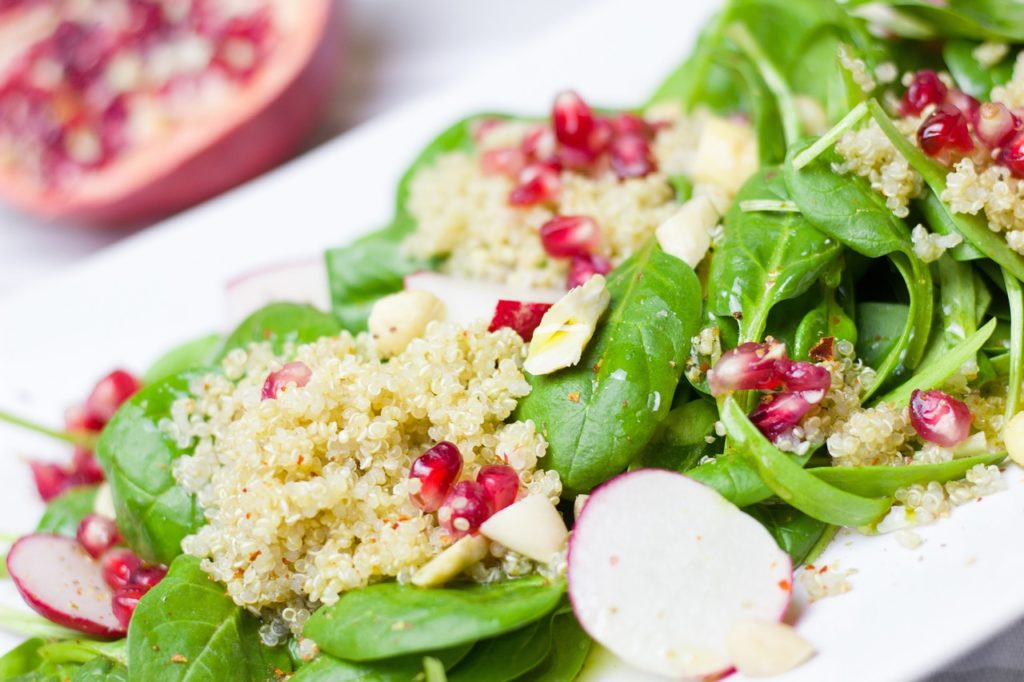Israeli cuisine is probably one of the best examples of the fusion of eastern and western cultures. This is something you can see not only in their food but also in their costumes, streets, and buildings, all of which show a perfect symbiosis of both cultures.
No long travel is needed to get to know Israeli cuisine. Israel is a country rich in contrasts and with a varied Mediterranean pantry. Its cuisine is the result of the fusion of the cuisines of the Jews who arrived from all over the world in different waves with the cuisine of the Middle East.
Among the many ingredients and dishes that make up Israel’s gastronomy, there is an ingredient with a very interesting and quite impressive history, Pearl Couscous.
Pearl couscous’ first appearance
Also known by many other names such as Ptitim, Jerusalem Couscous, Israeli Couscous, Giant Couscous, and probably many others. Pearl Couscous is the result of a sad part of last century Israel’s history when they went through a challenging time due to lack of rice.
It was in the 1950s when pearl couscous made became an alternative food in Israelis’ diet, and since then, it has been widely used as the main ingredient for multiple dishes in this country’s cuisine.
What exactly is couscous?
What is couscous? a pasta, a grain like rice, or simply small breadcrumbs?
At first glance, any of these possibilities could be the answer, but the truth is that couscous is a product made with a mixture of flours of various kinds of cereal: wheat, millet grain, semolina, and rice flour, which are soaked to get a mixture and then cooked in a steamer and dried. The result is these little balls called couscous.
Is there a difference between couscous and pearl couscous?
Yes! Of course, there are a few key aspects of the pearl couscous cooking process that make it different from its older relative, Couscous.
- For starters, pearl couscous grains are bigger than regular couscous grains.
- Instead of using semolina, pearl couscous is made with bulgur wheat flour.
- There’s no need to use a couscous maker, for any pearl couscous recipe you can follow the same instructions for cooking regular pasta.
- Traditional couscous is an older ingredient in Israeli cuisine, pearl couscous is a more recent addition.
As you can see, it might be tricky not to get the wrong couscous, but if you make sure you’re ordering the right thing, there are many exotic pearl couscous recipes you can try that will surely make you look like a professional cook.
How to make Pearl Couscous: a foolproof guide
When it comes to making any pearl couscous recipe, it is essential to understand the properties of this type of couscous.
Because of its size, Israeli couscous has a slightly chewy texture, similar to barley, and a slightly savory flavor because it is toasted. However, like regular couscous and other whole grains, Israeli couscous has a mild flavor that should be enhanced with seasonings, spices, sauces, or fresh herbs.
Pearl couscous can be eaten as pasta, quinoa rice, or basically any other grain. You can also add it to salads, and soups; another way to eat it is to top it with a sauteed vegetable dip or roasted vegetables.
Below, you will find a basic, yet delicious pearl couscous salad recipe we have chosen for you to make at home. Don’t worry, it is easy and quick!
Pearl couscous salad
Ingredients:
For the salad
- 1 cup pearled couscous (large grain).
- 4 cups water.
- 1/2 cup red onion diced or julienned.
- 2 tomatoes cut into squares.
- 1/2 red bell pepper cut into squares.
- Chopped, fresh parsley or cilantro to taste.
For the vinaigrette
- 4 tablespoons of olive oil.
- 3 tablespoons of balsamic vinegar.
- Salt to taste.
- Pepper to taste.
- 1/2 lemon juice (optional).
Preparation instructions:
For the couscous and salad
- Place a medium saucepan over medium-high heat. Add the water and bring it to a boil.
- Add the couscous. Let it boil over medium heat for 6-7 minutes.
- Turn off the heat and remove it from the stove.
- Strain and add cold water. Drain well.
- In a bowl or salad bowl put the couscous, vegetables, and vinaigrette. Check taste.
- Mix everything together and serve.
For the vinaigrette
- In a small bowl, combine olive oil, balsamic vinegar, salt, pepper, and lemon. Mix with a fork or whisk.
- Add to salad, and toss. Check taste.
